Abstract
There is considerable interest in the production of fruit vegetables in Japanese agriculture, especially winter-spring cucumbers. According to data for 2022, the national winter-spring cucumber harvest will reach a maximum of 286kt, with the planted area reaching a maximum of 2.58kha. On the other hand, Miyazaki has the highest shipping volume at 57.7kt. The trend that can be seen from these figures is that winter-spring cucumber production occupies an important position nationwide. Miyazaki in particular leads in terms of shipping volume, and it is clear that there are differences in production volumes from region to region. Furthermore, a comparison of cultivated area and harvest yields indicates high production efficiency. This trend suggests progress in technological innovation and management efficiency in Japanese agriculture.
Winter-spring cucumber harvest yields (main data).
The winter-spring cucumber harvest yield in Japanese agriculture has fluctuated between 1973 and 2022. The national harvest peaked at 466kt in 1982 and has been declining since then. The current harvest yield is only 61.4% of the peak. This trend is due to a variety of agricultural factors. For example, advances in agricultural technology, changes in pesticide use, and fluctuating climatic conditions are all influencing the situation. Changes in demand and market competition also affect yields. However, there are also efforts to curb the decline through more efficient cultivation methods and quality improvement efforts. Taking these factors into consideration, it is clear that winter-spring cucumber yields have changed due to a variety of factors from the past to the present.
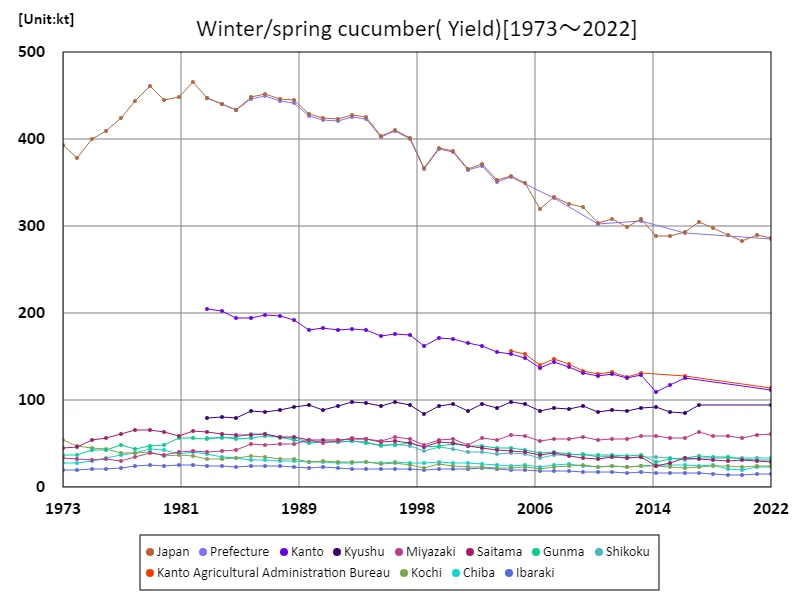

The maximum is 466kt[1982] of Japan, and the current value is about 61.4%
Winter-spring cucumber harvest volume (by prefecture).
When it comes to fruit vegetable harvests in Japan, the 2022 data by prefecture reveals some interesting features. Miyazaki Prefecture recorded the largest harvest, the largest overall. This trend suggests that Miyazaki Prefecture has an advantage in fruit and vegetable production. Miyazaki Prefecture’s warm climate and abundant farmland likely contributed to this success. On the other hand, fruit vegetable production is also thriving in other regions, with cultivation taking place according to the characteristics and demand of each region. In addition, differences in regional climatic conditions and agricultural techniques are likely to affect yield variations. These regional differences demonstrate the diversity and strengths of Japan’s fruit and vegetable production. The fact that Miyazaki Prefecture had the largest harvest volume attests to the importance of agriculture in the region, and sustainable production that makes use of the characteristics of each region will continue to be required in the future.
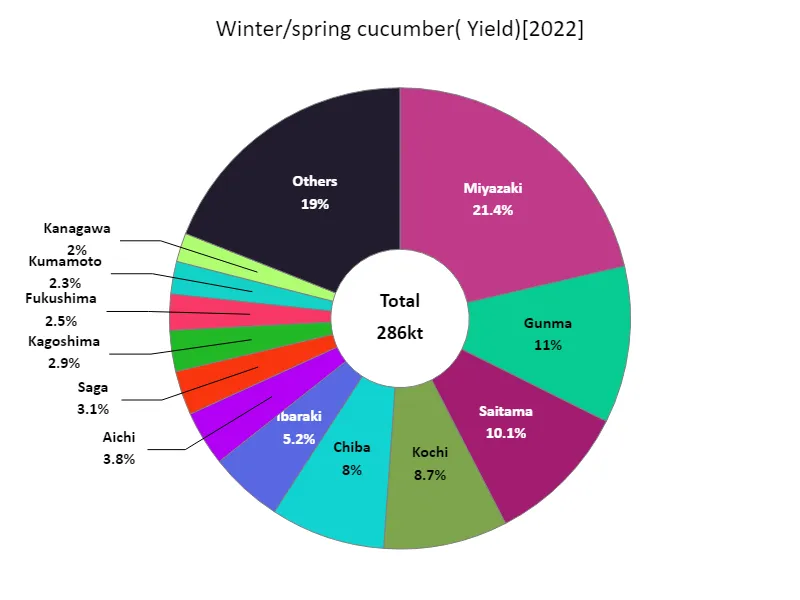

The maximum is 61.1kt of Miyazaki, the average is 6.09kt, and the total is 286kt
Area planted with winter-spring cucumbers (main data).
The area planted with winter-spring cucumbers in Japan has fluctuated between 1973 and 2022. In the first year, 1973, the cultivated area nationwide reached its peak at 6.14 kha. Since then, the area under cultivation has steadily declined, and currently stands at just 42% of its peak. Several factors are influencing this trend. One reason is the diversification of crops and changes in demand due to structural changes in agriculture. Additionally, urbanization of farmland and a decline in the agricultural labor force are also contributing to the reduction in cultivated area. Additionally, climate change and increased natural disasters are also affecting agricultural productivity, which can lead to reduced cultivated area. On the other hand, technological innovations in agriculture and the introduction of sustainable cultivation methods have made it possible to produce food efficiently even on limited farmland. Due to the interplay of these factors, the area planted with winter-spring cucumber has changed from the past to the present, but it also poses further challenges and possibilities in terms of agricultural sustainability and efficiency.
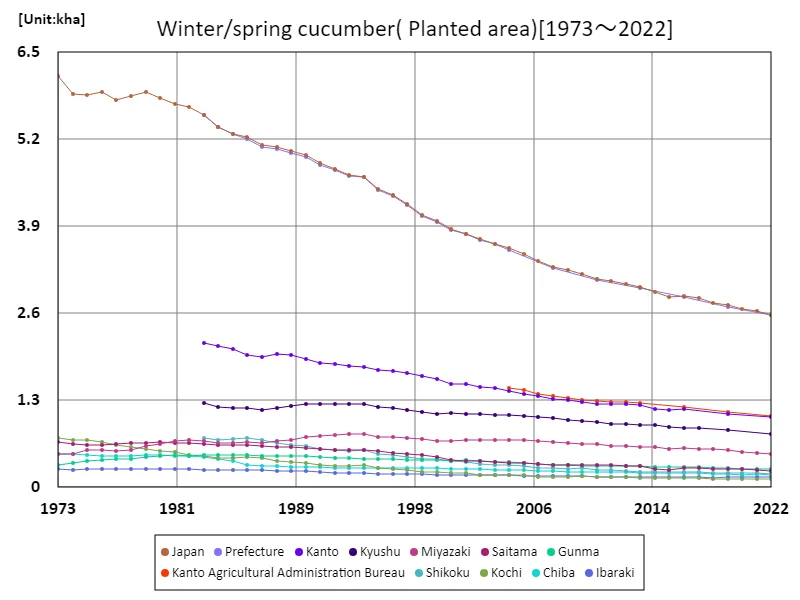

The maximum is 6.14kha[1973] of Japan, and the current value is about 42%
Area planted with winter-spring cucumbers (by prefecture).
Data on the area of fruit and vegetable cultivation in Japan for 2022 reveals some interesting trends. Miyazaki Prefecture recorded the largest cultivated area of 501 hectares, which is currently the largest. This suggests that Miyazaki Prefecture has an advantage in fruit vegetable cultivation. Miyazaki Prefecture’s warm climate and abundance of farmland likely contributed to this outcome. On the other hand, fruit vegetables are also grown in other regions, with cultivation taking place according to local demand and climatic conditions. Differences between regions are influenced by regional characteristics and market demand. Also, looking at the data for 2022, there is a tendency for the area cultivated with fruit vegetables to be increasing. This could be due to factors such as increased demand and advances in agricultural technology. In general, the area of land used to cultivate fruit vegetables varies by region and changes depending on factors such as demand and environmental conditions. While Miyazaki Prefecture is notable for having the highest current area, it also suggests that active cultivation is taking place in other regions.
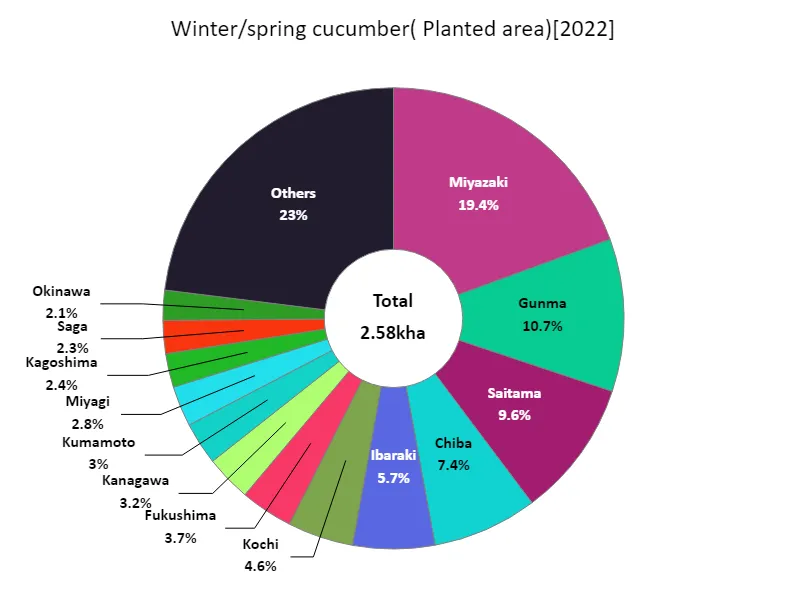

The maximum is 501ha of Miyazaki, the average is 54.9ha, and the total is 2.58kha
Winter-spring cucumber shipping volume.
Several characteristics emerge from the shipping volume data for winter-spring cucumbers in Japan in 2022. The largest shipment was in Miyazaki Prefecture at 57.7kt, with the overall average being 5.73kt. Overall shipments reached 269kt. This data shows that Miyazaki Prefecture is a national leader in winter-spring cucumber shipping volumes. It is believed that Miyazaki Prefecture’s warm climate and fertile farmland have contributed greatly to this success. On the other hand, even when looking at the overall average and total figures, it is clear that a considerable amount of winter-spring cucumbers are produced and shipped. This suggests that there is high demand for winter-spring cucumbers across Japan. To meet the growing demand, active cultivation is being carried out in various regions. Additionally, the increase in shipping volume may be due to advances in agricultural technology and the establishment of efficient production systems. Overall, 2022 winter-spring cucumber shipping volume data indicates strong production, particularly in Miyazaki Prefecture, and high demand across Japan, reflecting the vitality and diversity of agriculture.
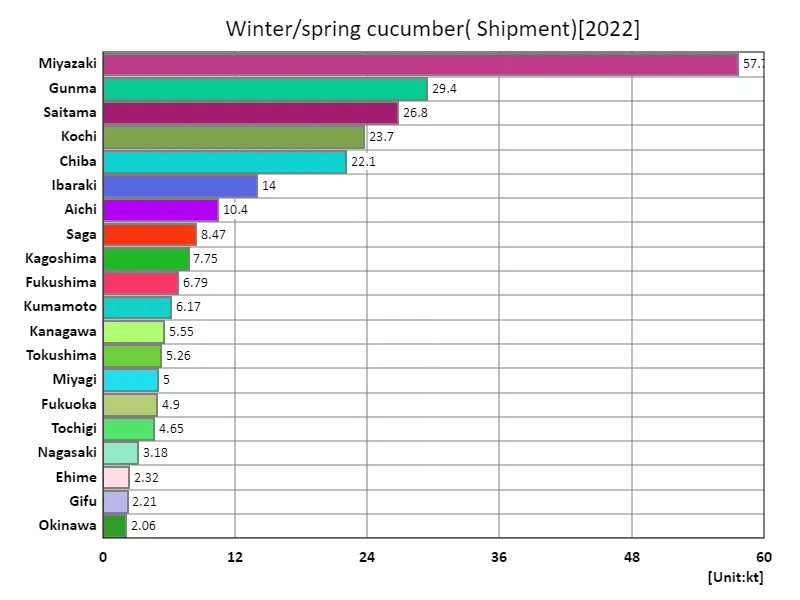

The maximum is 57.7kt of Miyazaki, the average is 5.73kt, and the total is 269kt
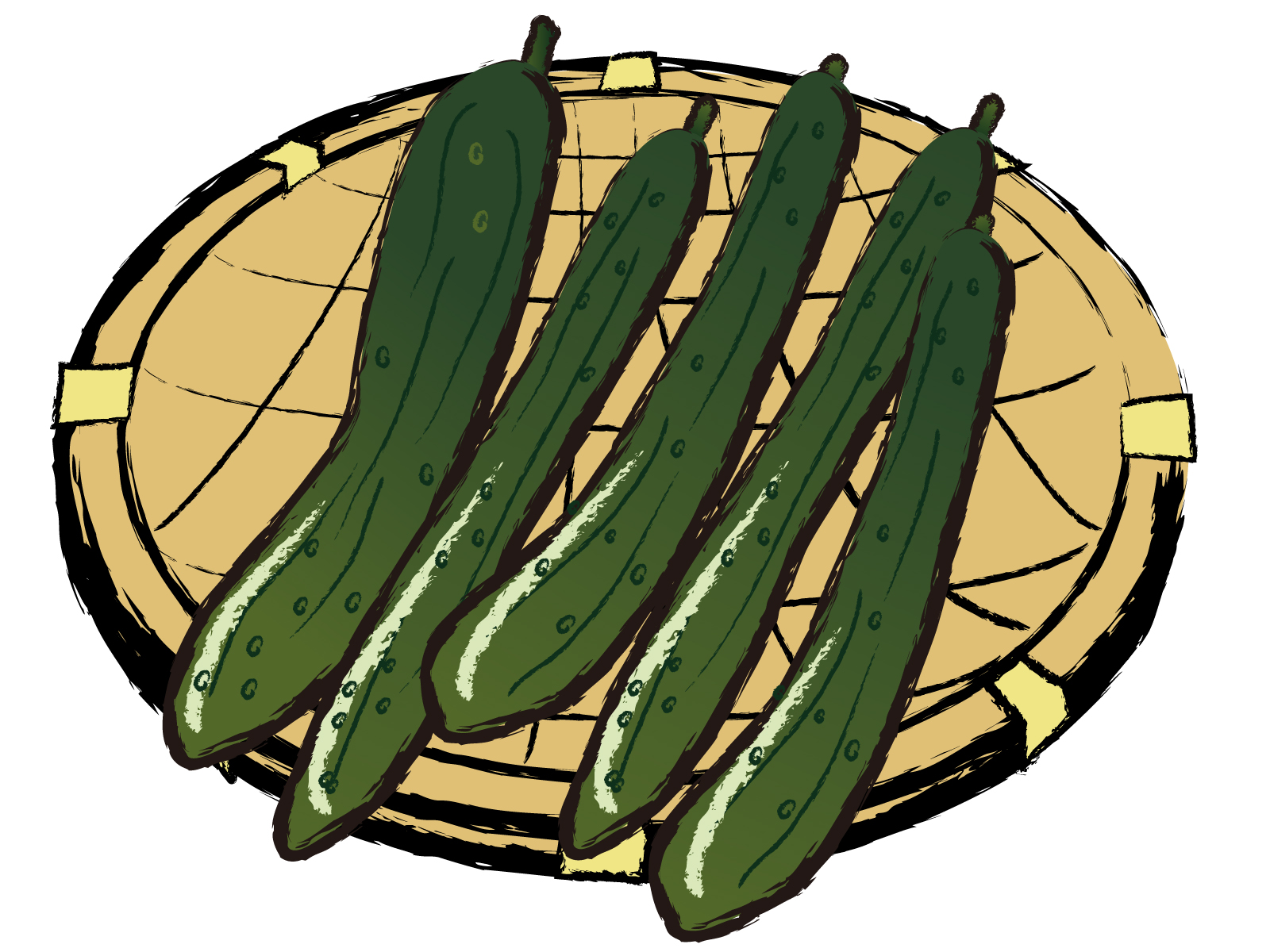


Comments